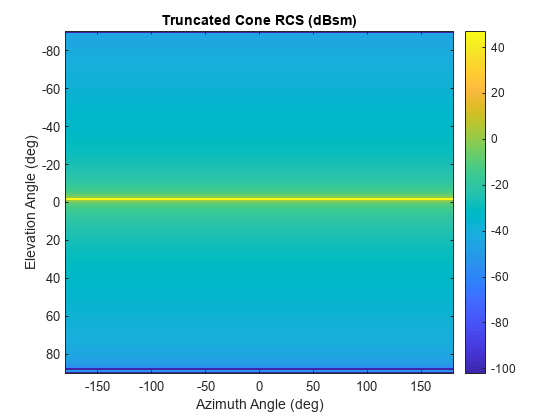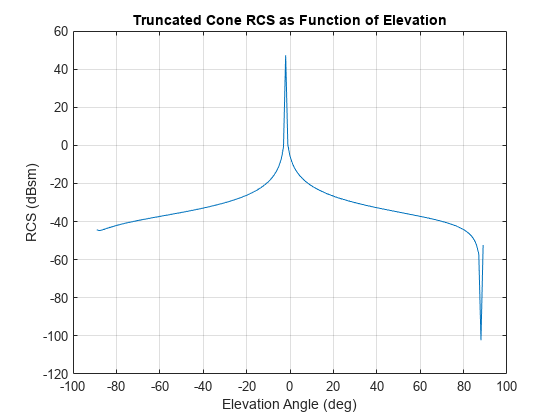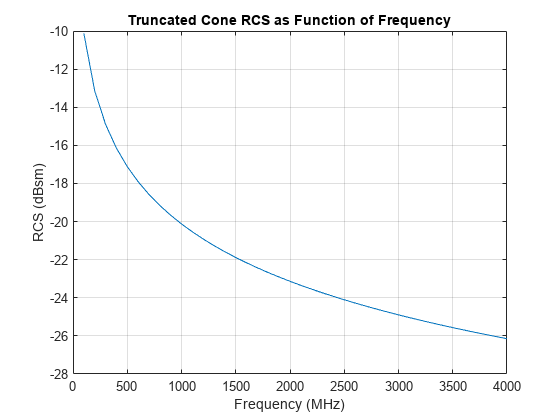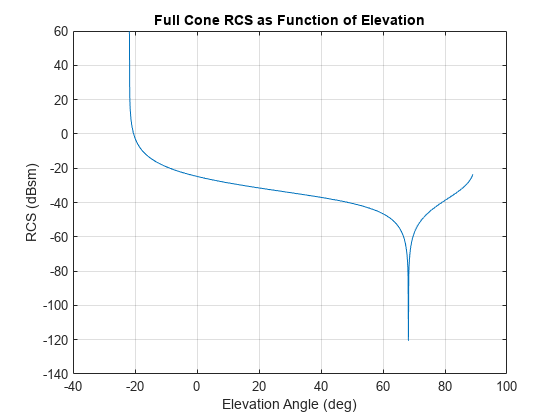rcstruncone
Syntax
Description
rcspat = rcstruncone(r1,r2,height,c,fc)r1 is the
radius of the small end of the cone, r2 is the radius of the large end,
and height is the cone height. The radar cross section is a function of
signal frequency, fc, and signal propagation speed,
c. You can create a non-truncated cone by setting
r1 to zero. The cone points downward towards the
xy-plane. The origin is located at the apex of a the non-truncated cone
constructed by extending the truncated cone to an apex.
Examples
Input Arguments
Output Arguments
More About
References
[1] Mahafza, Bassem. Radar Systems Analysis and Design Using MATLAB, 2nd Ed. Boca Raton, FL: Chapman & Hall/CRC, 2005.
Extended Capabilities
Version History
Introduced in R2021a
See Also
rcscylinder | rcsdisc | rcssphere | phased.BackscatterRadarTarget | phased.RadarTarget




